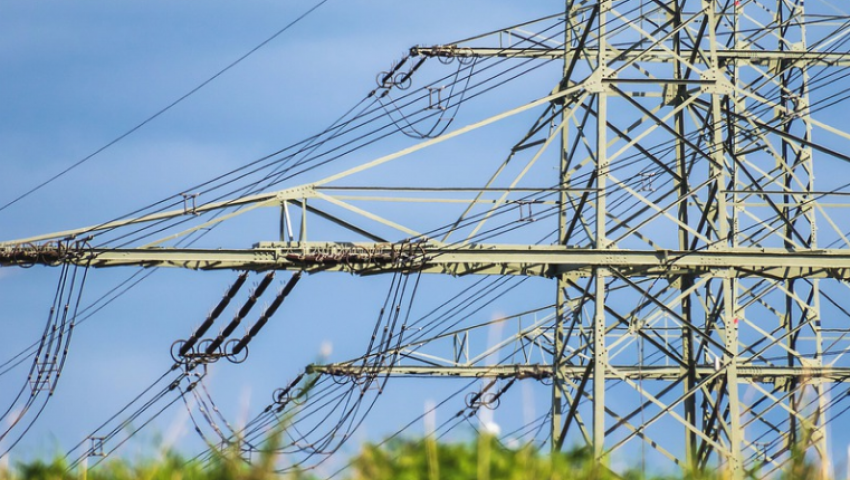The Institute for Market Economics: Energy is at the heart of Bulgaria's Recovery Plan

Photo: Pixabay / Bulgaria's recovery plan has already been presented to Brussels and is currently being reviewed and evaluated by the European Commission.
Just over 44% of the total funds will be spent on energy and energy efficiency projects, according to an analysis by the Institute for Market Economics, published in the IME's weekly bulletin. This is understandable, as one of the main criteria of the European Commission is that at least 37% of the expenditure is set aside for reforms and projects to combat climate change. In practice, this means addressing climate change through investments in energy, transport, agriculture, the environment and more. Another relatively priority sector for investment in the Bulgarian plan is education, as 9.2% of the funding of all projects is directed there.
Bulgaria's recovery plan has already been presented to Brussels and is currently being reviewed and evaluated by the European Commission. It contains a description of the main structural reforms and investments that will be supported by European funding under the Mechanism for Reconstruction and Sustainability. Projects must meet 11 Commission criteria in order to be approved.
The Bulgarian plan is structured in 4 pillars and aims to achieve economic recovery and transformation after the Covid crisis, and the changes should have a lasting positive impact on the business environment and institutions, climate change and digital development. Ultimately, in the long run, the NAP is expected to contribute to Bulgaria's convergence with the European economy and income.
An essential part of the documentation of each country's recovery plan is the list of projects that will be financed through it. These are the specific investment intentions, detailed in a standard format. In the latest version of the Plan, according to Deputy Prime Minister for European Funds Management Atanas Pekanov, half of the projects have been revised and currently contains 60 projects, broken down by sector, as shown in the chart.
Bulgaria has chosen to finance energy projects above the Commission's minimum requirement
If we have to make a comparison with European countries, whose plans have already been approved (with the stipulation that the costs of combating climate change may include other sectors besides energy), it is impressive that Bulgaria has chosen to finance energy projects above the Commission's minimum requirement and to a greater extent than European countries with similar economic development. The leading countries in this regard (Luxembourg, Austria and Denmark) show a serious priority of the green transition - about 60% of the total costs in their plans.
The energy projects in the Bulgarian plan are 10, and the one with the largest funding is "Scheme in support of the construction of at least 1.7 GW of RES and batteries in Bulgaria." The project aims to integrate into the electricity grid a higher percentage of renewable energy sources, combined with the construction of the minimum required capacity for storage of electricity (batteries). It is interesting that the project has a total value of BGN 2.7 billion, of which BGN 1.8 billion are privately funded and just under BGN 1 billion are from the Mechanism for Recovery and Sustainability.
The second largest project in this area is the "Scheme to support the decarbonisation process through the construction of high-efficiency, low-carbon power plants, replacing coal capacity in the coal regions". Its total budget is BGN 1.7 billion, and here a significant share of funding is expected to come from the private sector (including investments in kind worth BGN 0.7 billion). The project is expected to receive funding under both the Rehabilitation and Sustainability Mechanism and the Modernization Fund [1]. This is perhaps the project that has received the most public response, as it aims to build gas-fired power plants through a public tender that will replace coal-fired power plants.
However, the third major energy project, which has the largest EU funding, is "Support for sustainable energy renovation of the housing stock" (or the so-called renovation of residential buildings). It is worth a total of BGN 1.4 billion, of which BGN 1.2 billion is European funding and aims to improve the energy performance of the national housing stock, save primary energy for the renovated residential buildings and reach a class of energy consumption at least "B" after application of energy saving measures in residential buildings. Experience so far shows that many municipalities prefer housing rehabilitation projects, as they have a clear and visible result and allow for activities outside the standard scope of municipal budgets.
The plan does not contain an overall assessment of the effects of projects at the sectoral level.
Unfortunately, the Recovery Plan does not contain an economic analysis for an overall assessment of the effects of projects at the sectoral level, which means that it is very difficult to assess what the results of their implementation will be and how far the energy policy objectives will be achieved. The reforms in the field of energy policy described in the plan are very far from the definition of structural reforms, as they lack clear goals and results, time horizon, indicators for measuring the achieved and do not allow to assess their connection with the projects. This is a shortcoming that the announced reforms in other sectors also suffer from, but it is especially visible in the energy sector. Whether what is presented in the plan is enough for the European Commission remains to be seen, but from the point of view of national policy and interests there is still much to be desired.
